Section 320 and State Funded Projects
Programmatic
Comprehensive Conservation and Management Plan (CCMP) Update
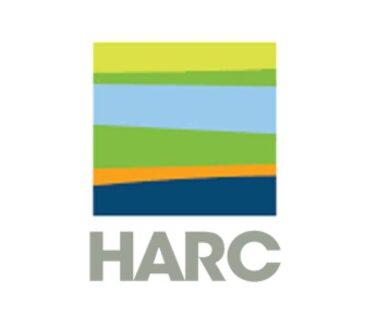
CCMP Actions Implemented: General support of all Action Plans
Grantee/Contractor: Houston Advanced Research Center/GeoTechnology Research Institute
Subwatersheds: All
Total Project Budget: $222,157 (Fiscal 2024 $60,000 Federal, $162,157 State)
Project Period: September 2023-February 2026
Project Description: The project will update the revised GBP, 2nd Edition with the information in the Finance Plan Addendum and the Galveston Bay Estuary Resilience Assessment. A stakeholder process will result in an addendum that will serve as a clear, concise update to the Action Plans within the GBP, 2nd Edition for GBEP and its stakeholders that reflects changing priorities and conditions within the watershed. The updated GBP, 2nd Edition will be built on the same framework, background, and stakeholder input critical to GBEP that includes issues like water quality, habitat preservation, the impacts of extreme storm events, microplastics, and others to reflect management strategies aimed at creating a resilient bay system. The strategies and tools identified in this plan, in concert with the collaboration, coordination, and monitoring that occur through the GBC and its subcommittees, will ensure that Galveston Bay is protected for generations to come.
Regional Monitoring Database

CCMP Actions Implemented: ACS-1, ACS-2
Grantee/Contractor: Houston Advanced Research Center/GeoTechnology Research Institute
Total Project Budget: $350,228 (Fiscal 2021 $65,000.50 Federal, $65,000.50 State; Fiscal 2022 $52,009 Federal, $52,009 State; Fiscal 2023 $32,761.72 Federal, $32,761.72 State; Fiscal 2024 $32,761.72 Federal, $32,761.72 State)
Project Period: September 2020 – August 2025
Project Description: The Regional Monitoring Database will gather environmental datasets related to the lower Galveston Bay watershed in cooperation with federal, state, and local governments, as well as universities and research organizations, to evaluate progress in reaching a sustainable Galveston Bay ecosystem and identify gaps in monitoring programs. The Regional Monitoring Database will consist of an interactive, web-based application with data download capabilities and will be developed with input from stakeholders.
Public Participation and Education (PPE)
Mobilizing the Environmental Education Community Through Prairie Education
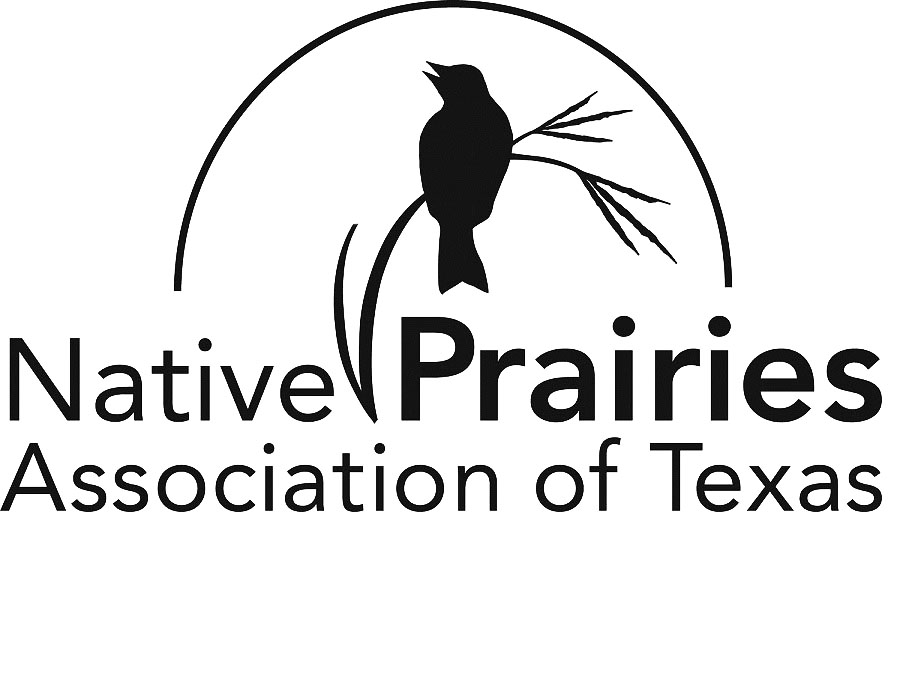
CCMP Actions Implemented: SPO-1, SPO-2, SPO-3, SPO-4, PEA-1, PEA-2, PEA-3
Grantee/Contractor: Native Prairies Association of Texas (NPAT)
Subwatersheds: Armand-Taylor
Total Project Budget: $81,052.31(Fiscal 2025 $40,526.16 Federal, $40,526.15 State)
Project Period: September 2024 – August 2026
Project Description: This program will increase the knowledge and awareness of native coastal prairies and wetlands and provide field experiences for both students and educators. Schools will be identified using a needs assessment conducted as part of a previous project that utilized social, environmental, and education factors to identify schools that lack access to environmental education programs.
NPAT in partnership with a subgrantee will offer three different types of field experiences in this program. Teacher and administrator workshops will provide educators and administrators with information on the ecological, historical, and cultural importance of coastal prairie ecosystems. Field trips will be offered in the fall and spring and highlight the importance of these ecosystems throughout Texas history and their current importance to people, plants, and wildlife. The Summer Camp on the Prairie will serve a minimum of 10 students and include lessons on prairies, technology, and environmental career opportunities.
Wetland Connections

CCMP Actions Implemented: SPO-1, PEA-3
Grantee/Contractor: GBF
Subwatersheds: All
Total Project Budget: $173,300 (Fiscal 2025 $173,300 State)
Project Period: September 2024 – August 2026
Project Description: Wetland Connections is a year-long program that connects 6-12th grade students to the bay through nature journaling and data collection with mini-campus wetlands, a series of STEM classroom workshops highlighting the importance of wetlands and human impacts on them, and a spring field experience at a local wetland on Galveston Bay. This project also includes two teacher workshops where teachers learn about various conservation and environmental career pathways from experts in their fields.
Engaging Under-resourced Communities in Conservation Phase II
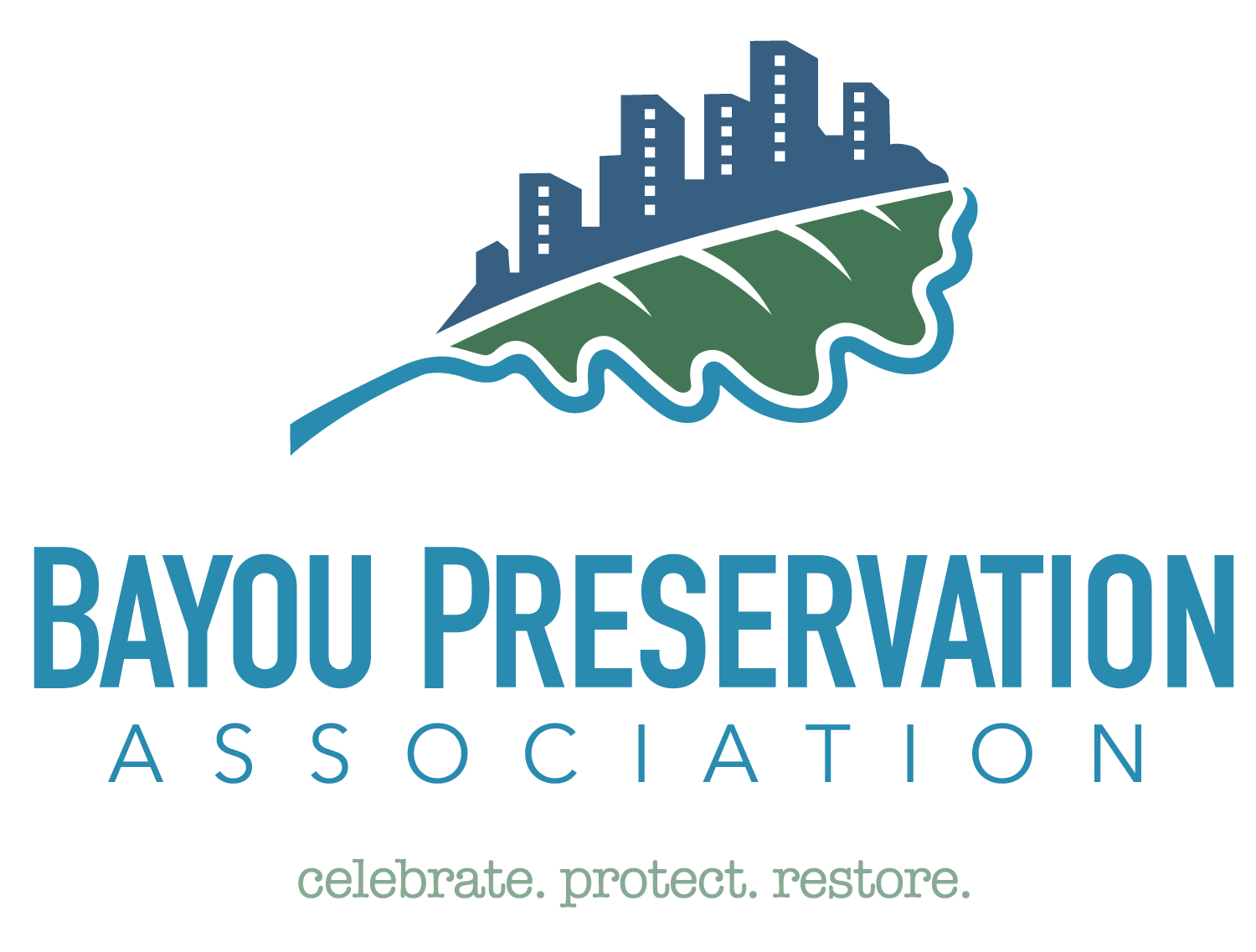
CCMP Actions Implemented: SPO-1, SPO-2, SPO-3, PEA-2
Grantee/Contractor: BPA
Subwatersheds: All
Total Project Budget: $64,140 (Fiscal 2025 $64,140 State)
Project Period: September 2024 – August 2026
Project Description: Bayou Preservation’s Bayou Stewards for Engaging Under-resourced Communities in Conservation program is an innovative initiative aimed at empowering community stakeholders and fostering meaningful connections between conservation efforts and under-resourced communities in the Galveston Bay area. Over the course of 18 months, this program will recruit, select, and train 4 dedicated community stakeholders to become watershed stewards, equipped with the knowledge and skills to drive science-based impactful change. The host nonprofits, with direct support from BPA, will actively work towards providing mentorship opportunities and support to selected Bayou Stewards. This mentorship will enable the stewards to develop interpretive programming tailored to target audiences, emphasizing the interdependence between the well-being of their communities and the preservation of native habitats.
Bay to Schools

CCMP Actions Implemented: PEA-3
Grantee/Contractor: Galveston Bay Foundation
Total Project Budget: $107,937 (Fiscal 2024 $53,968.50 Federal, $53,968.50 State)
Project Period: September 2023-August 2025
Project Description: This project will increase the capacity of GBF’s STEM Workshop program by employing SCA interns to implement programs in underrepresented school districts, provide on-the-job training and mentorships for SCA interns, strengthen relationships with participating school districts, provide educator professional development, and amplify opportunities for project promotion and publicity via literature and conference presentations by UHCL and project partners. GBF’s Environmental STEM Education programs provide classroom and place-based STEM environmental education focused on Galveston Bay to over 10,000 students and teachers each year. The goal of this project is to directly reach at least 4,800 students and teachers via classroom STEM workshops and teacher professional development, indirectly reach up to 4,000 students via teachers implementing lessons learned through teacher professional development, and train two SCA interns in environmental education best practices during this project.
Drought and Water Conservation Outreach Campaign

CCMP Actions Implemented: SPO-2, SPO-4, PEA-1, PEA-2, PEA-3, FWI-3
Grantee/Contractor: Houston Public Works
Total Project Budget: $50,000 (Fiscal 2024 $25,000 Federal, $25,000 State)
Project Period: September 2023 – May 2025
Project Description: This contract will allow the City of Houston to expand the reach of the Drought Contingency Plan and Water Conservation Campaign for the Houston area. Contract funding will be used for the creation of more collateral materials as well as more paid advertising to increase the reach and effectiveness of the campaign. Due to the constrained budget the initial campaign will need to focus on the main methods of water conservation outlined in the Drought Contingency Plan (limiting outdoor irrigation, only watering between the hours of 7:00 p.m. and 5:00 a.m., reducing irrigation runoff, and repairing water leaks). The increased funding for creative design will expand the campaign to touch on secondary water conservation methods such as rain barrels, native plants, smart irrigation, and others.
Water Quality Outreach Implementation for Vulnerable Rural Populations
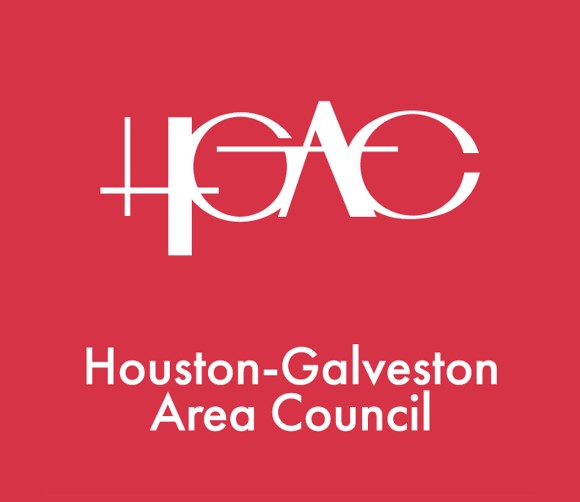
CCMP Actions Implemented: SPO-2, SPO-3, SPO-4, PEA-1, PEA-2
Grantee/Contractor: Houston-Galveston Area Council
Total Project Budget: $40,000 (Fiscal 2023 $20,000 Federal, $20,000 State)
Project Period: September 2022 – May 2025
Project Description: The Coastal Communities water quality outreach project was designed to support implementation of management measures and outreach requirements in watershed-based plans. This proposed project aims to identify more underserved populations and test different engagement strategies to determine what barriers prevented engagement. Resources would then be adapted or developed to specifically address those barriers, whether they are language limitations, lack of reliable internet or transportation, etc.
Engagement with these populations will provide information on all focus topics of the Coastal Communities project. However, residents will be targeted primarily based on low-income levels and high risk of On-Site Sewage Facilities (OSSF) in need of repair or replacement, which can have detrimental effects on resident and public health, and local waterways. Partnerships with local organizations and institutions will assist with identifying audiences and developing or testing engagement strategies. In this proposed project, H-GAC will expand the coastal communities support of watershed-based plan implementation.
Trash Bash
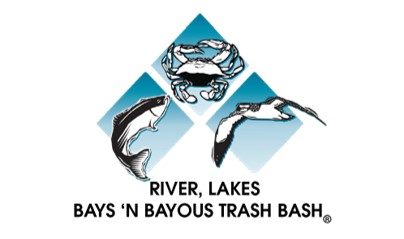
CCMP Actions Implemented: SPO-1, SPO-3, PEA-2, PEA-3
Grantee/Contractor: The Houston-Galveston Area Council (H-GAC)
Total Project Budget: $35,000 (Fiscal 2023 $10,000 State; Fiscal 2024 $7,500 Federal, $7,500 State; Fiscal 2025 $5,000 Federal, $5,000 State)
Project Period: September 2022– August 2025
Project Description: This project supports Texas’s largest, single-day, volunteer-based waterway cleanup event—River, Lakes, Bays N’ Bayous Trash Bash®. Supporting the personnel costs of the Houston-Galveston Area Council regional coordinator for Trash Bash® ensures continuity throughout the process and consistency in planning and execution from year to year. Trash Bash planning is a year-round process and requires ongoing planning, maintenance, and attention every month.
Galveston Bay Report Card Vietnamese Outreach

CCMP Actions Implemented: SPO-2, SPO-3, PEA-1, PEA-2
Grantee/Contractor: Houston Advanced Research Center
Total Project Budget: $65,000 (Fiscal 2023 $32,500 Federal, $32,500 State; Fiscal 2024 $5,000 Federal, $5,000 State)
Project Period: September 2022 – March 2025
Project Description: This project will strengthen and advance the GBRC – a community-driven, scientific analysis of the health of Galveston Bay. Twenty-two indicators across six categories (habitat, water quality, human health risk, pollution events and sources, wildlife, and coastal change) are graded to identify areas for improvement within the bay’s ecosystem. The GBRC provides learning opportunities for the general public and scientific guidance on the direction of environmental work in the area. These outreach efforts connect approximately 5,700 people to the GBRC each year and the program serves as the model for watershed report cards. In this project, outreach and engagement activities will be targeted to the Vietnamese community surrounding Galveston Bay. According to the 2020 United States Census, 104,689 Vietnamese Americans lived in Harris County in 2019 and the Asian population is noted to be one of the fastest growing populations in the county. This project specifically aims to reach and engage this Vietnamese-speaking community surrounding Galveston Bay, known users of the Bay that are often overlooked in environmental engagement efforts, to create a more inclusive GBRC.
Mobilizing the Environmental Education Community through Prairie Education
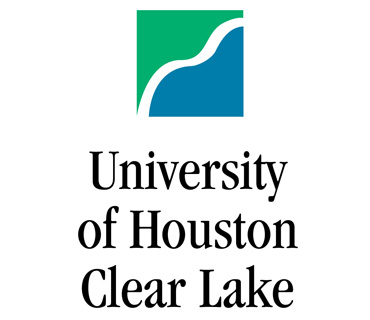
CCMP Actions Implemented: SPO-1, SPO-2, SPO-3, SPO-4, PEA-1, PEA-2, PEA-3
Grantee/Contractor: University of Houston Clear Lake
Total Project Budget: $92,515.60 (Fiscal 2022 $40,000 Federal, $40,000 State; Fiscal 2023 $2,846.92 State; Fiscal 2024 $4,834.34 Federal, $4,834.34 State)
Project Period: September 2021 – May 2025
Project Description: The University of Houston-Clear Lake’s Environmental Institute of Houston (EIH) and Native Prairies Association of Texas (NPAT) will facilitate prairie education programs to increase knowledge and awareness of the ecological services provided by native coastal prairies and wetlands for K-12 students, educators, and the community at large. This two-year project seeks to address the low science and math test scores and workforce development of students in Texas Region 4 communities by providing STEM activities on the Deer Park prairie and at EIH through field trips, summer camps, and teacher/administrator workshops. Activities can be adapted to virtual formats if needed.
Natural Resources Uses (NRU)
FY 2025 Conservation Assistance Program

CCMP Actions Implemented: HC-1, SC-1
Grantee/Contractor: GBF
Subwatersheds: All
Total Project Budget:$230,000 (Fiscal 2025 $50,000 Federal, $80,000 State; Fiscal 2026 $50,000 Federal, $50,000 State)
Project Period: September 2024 – August 2026
Project Description: The Conservation Assistance Program (CAP) was initiated in 2011 and has been reauthorized in several phases through 2024. This contract includes funding to continue the program and build upon successful land conservation efforts in the Galveston Bay watershed and complete the ongoing projects underway.
Growth and development in the lower Galveston Bay watershed are accelerating land use changes from traditional open space, agricultural, and recreational uses toward residential and commercial uses. This trend threatens the health of our ecosystems surrounding Galveston Bay and associated waterways by reducing parcel sizes and permanently altering the landscape of the region. Additionally, land prices are continuing to rise as the availability of land is reduced and demand increases. Purchasing ecologically significant parcels of land at today’s prices will help us maximize the availability of federal and state conservation funding sources.
Monitoring and Managing the Threatened Eastern Black Rails in the Galveston Bay Area
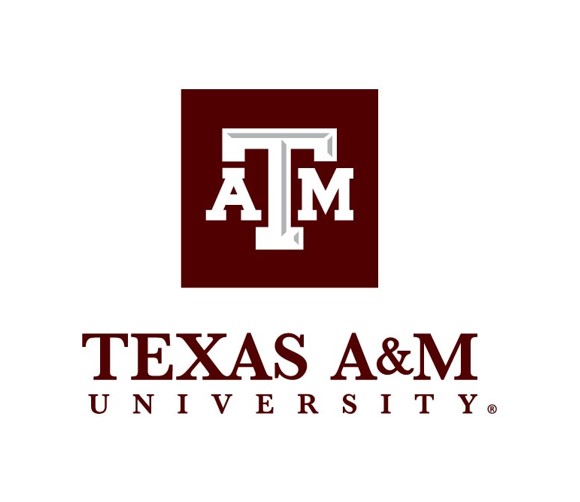
CCMP Actions Implemented: HC-2, HC-3, SC-2, RES-6
Grantee/Contractor: Texas A&M University (TAMU)
Subwatersheds: Austin/Bastrop, West Bay, East Bay
Total Project Budget: $174,235 (Fiscal 2025 $69,194 Federal, $89,194 State; Fiscal 2026 $7,923.50 Federal, $7,923.50 State)
Project Period: September 2024 – May 2027
Project Description: The project aims to study and conserve the Black rail (Laterallus jamaicensis), a threatened species heavily reliant on high salt marsh habitats. The research involves using Autonomous Recording Units (ARUs) and a Forward Looking InfraRed (FLIR)-equipped drone to evaluate habitat management techniques and response effects on Black rail populations, as well as conducting mark-recapture studies and fecal metagenomics to understand their diet. The research will be carried out at multiple sites within the Galveston Bay watershed.
After consultation with appropriate refuge personnel, ARUs will be deployed to determine when Black rails recolonize an area after treatments at sites within broader management goals. A FLIR-equipped drone will also be used to survey for Black rails in control and treatment areas. Additionally, habitat (such as above-ground biomass) and landscape-level metrics (such as patch size) will be examined to further refine the understanding of how habitat quality influences Black Rail occupancy. During the non-breeding season, rope-drags will be conducted at selected locations to determine if Black rails are present. Individuals that flush will be banded, measured, and any fecal material present will be collected and analyzed to quantify the diet.
Wetland Planting Assistance in Galveston Bay

CCMP Actions Implemented: HC-2, HC-3, SC-1
Grantee/Contractor: GBF
Subwatersheds: Trinity Bay, West Bay
Total Project Budget: $175,000 (Fiscal 2025 $175,000 State)
Project Period: September 2024 – August 2026
Project Description: The objective of the project is to assist the Galveston Bay Foundation in its efforts to planting wetland vegetation, primarily Spartina alterniflora, at two upcoming shoreline protection project sites. The sites include Gordy marsh (Trinity Bay) and Oyster Lake (West Bay). This project should result in approximately 45,000 stems of Spartina alterniflora being planted at either or both the Gordy Marsh and/or Oyster Lake project sites. The project will allow for GBF to enter into agreements with contractors to plant project sites that provide logistical challenges making it difficult to get volunteer planters to the project location. As an example, the Oyster Lake project site is a remote site accessible only via an approximately 11-mile boat trip, making it difficult to get volunteers and planting materials to and from the site. Funding would also allow for the contractual harvesting of plants for events in which volunteers or staff cannot meet the demand for the number of plants required to be harvested to support the event, if logistically feasible.
Bay Harbor Island Stabilization (Adaptative Management & Enhancement)

CCMP Actions Implemented: HC-2, HC-3, SC-1
Grantee/Contractor: GBF
Subwatersheds: West Bay
Total Project Budget: $132,700 (Fiscal 2025 $132,700 State)
Project Period: September 2024 – August 2026
Project Description: The Bay Harbor Rookery Island was originally restored in 2010, resulting in the creation of 2.20 acres of nesting habitat for colonial waterbirds. While the island continues to serve as valuable nesting habitat, ongoing erosion has decreased the island’s footprint and elevation. This proposal requests funding to support the engineering and design phase of the Bay Habor Island Stabilization project to expand the island footprint by up to 3.50 acres, restore nesting elevations, and further stabilize the northern shoreline.
White Oak Bayou Riparian Restoration Project
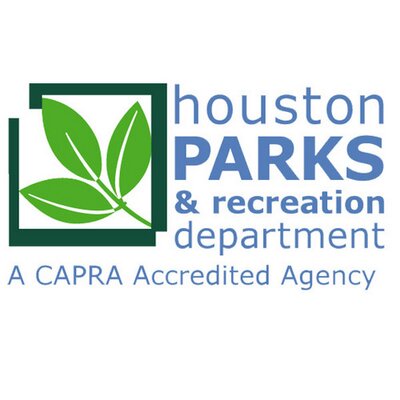
CCMP Actions Implemented: HC-2, HC-3, SC-1, SC-2
Grantee/Contractor: Houston Parks and Recreation Department
Total Project Budget: $50,000 (Fiscal 2024 $25,000 Federal, $25,000 State)
Project Period: September 2023 – May 2026
Project Description: The White Oak Bayou Riparian Restoration project will restore 4.6 acres of riparian forest at TC Jester Park and enhance nine acres of riparian forest at Little Thicket Park by performing invasive species removal and native species planting to support resident and migratory wildlife. The historic riparian habitat along White Oak Bayou seen on aerial imagery from the 1940’s was removed with bayou channelization and adjacent urban development by the 1970’s. The land that is now TC Jester Park once consisted of thick, native riparian forest. The park now contains regularly mowed, non-native lawn grass with sparce trees. Little Thicket Park, once the location of the original channel of White Oak Bayou, now acts as a tributary to the concrete channel that is now the main course of the bayou. This park has recently undergone a project to stabilize the banks of the tributary. The existing forest contains a large percentage of invasive species.
GBEP Interactive Conservation and Restoration Project Portal

CCMP Actions Implemented: HC-2, HC-3
Grantee/Contractor: Houston Advance Research Center
Total Project Budget: $100,000 (Fiscal 2024 $50,000 Federal, $50,000 State)
Project Period: September 2023 – May 2026
Project Description: Currently, associated project details have been captured in the GBEP Projects Database and the Implementation Tracking Viewer (ITV). This project will leverage the newly released Esri Hub Portal platform in combination with an ArcGIS Dashboard to provide interactive and dynamic data visuals, maps, and other summarized information/conservation variables (e.g., total number of acres by project type, number of projects by watershed). The expansion of the ITV to include an SRH will be developed in coordination with Black Cat GIS as the subgrantee of HARC/GTRI. In the SRH, spatial information will be combined with a dashboard of summary statistics, explanatory text, project photos, and data related to each project (as available). Filters for each of the subcommittees will make data easier to find and the SRH easier to use. Custom tools will allow the viewer to quickly sort projects, tally statistics, find final reports, and view special subsets of data. In addition to making another valuable dataset available to GBEP stakeholders, the SRH will add value and utility to the GBEP projects dataset by enhancing spatial content.
Clear Creek Riparian Restoration Project (II)
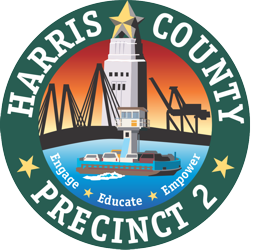
CCMP Actions Implemented: HC-2, HC-3, SC-2
Grantee/Contractor: Harris County Precinct 2
Total Project Budget: $36,000 (Fiscal 2024 $36,000 State)
Project Period: September 2023 – May 2026
Project Description: The goal of the Clear Creek Riparian Restoration project is to restore riparian forested areas at Challenger Seven Memorial Park, by removing invasive plants within the park’s riparian zone. Funding will support the final phase of this project, which is targeting 15-25 acres of invasive plant removal adjacent to previous work. An audio tour highlighting the restoration work to be accessed by park visitors will also be developed. Bayou Preservation Association will recruit and coordinate with local professionals to develop content, collateral, audio and visual presentation, and will incorporate education about riparian habitats into the audio tours.
The 9th Addition to the Coastal Heritage Preserve through a 3rd Acquisition at
Anchor Bay, Galveston Island, Texas
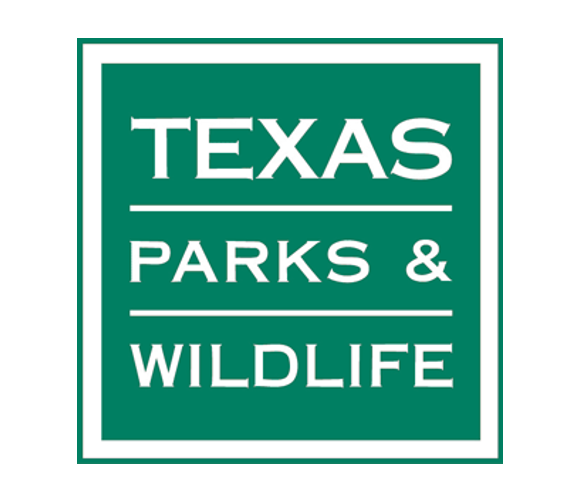
CCMP Actions Implemented: HC-1, SC-1, SC-2
Grantee/Contractor: Texas Parks and Wildlife Department
Total Project Budget: $576,481 (Fiscal 2024 $576,481 State)
Project Period: September 2023 – May 2026
Project Description: The objective of this project is to purchase, in fee simple, and conserve in perpetuity approximately 147.8 acres of coastal habitats. The purchased tract would be added to and managed as part of the 898-acre Coastal Heritage Preserve in Galveston, Texas. This project will protect habitat types that are crucial to numerous commercial and recreational estuarine fishery species including habitats that are classified as essential fish habitat for species under federal fishery management plans. This project will also conserve breeding, nesting, foraging, roosting, and wintering habitats that benefit numerous coastal-dependent and migratory bird species.
Baytown Nature Center Oyster Reef Restoration and Shoreline Protection Project

CCMP Actions Implemented: HC-2, HC-3, SC-1
Grantee/Contractor: City of Baytown
Total Project Budget: $95,000 (Fiscal 2023 $95,000 State)
Project Period: March 2023 – May 2025
Project Description: This proposal requests support for the design and implementation of an oyster reef restoration and shoreline protection project along the Crystal Bay shoreline of the Baytown Nature Center. The proposed project will involve the construction of linear oyster reefs, parallel to the shoreline, to provide wave attenuation as well as oyster habitat. It is estimated this living shoreline will result in the restoration of at least 0.10-acre of intertidal oyster habitat and up to 0.30-acre of intertidal marsh as well as protect up to 300 linear feet of shoreline.
Blackhawk Park Habitat Restoration Project

CCMP Actions Implemented: HC-2, HC-3, SC-1, SC-2
Grantee/Contractor: Houston Parks and Recreation Department
Total Project Budget: $80,000 (Fiscal 2023 $25,000 Federal, $25,000 State; Fiscal 2024 $15,000 Federal, $15,000 State)
Project Period: December 2022 – August 2025
Project Description: HPARD will restore and enhance habitat in the lower Galveston Bay watershed by performing invasive species removal to support resident and migratory wildlife. The project will utilize subcontractors, interns, and/or community volunteers to complete the work. he project will expand the footprint of an existing GBEP-funded habitat restoration at Blackhawk Park (10 acres). This will not only result in a larger piece of habitat that provides more significant wildlife habitat and ecosystem services, but also will reduce the amount of invasive species intrusion into the section of the park that is already restored.
The Impact of Cold-Stunning Events as Physical Stressors on Sea Turtle Movement and Behavior in Galveston Bay
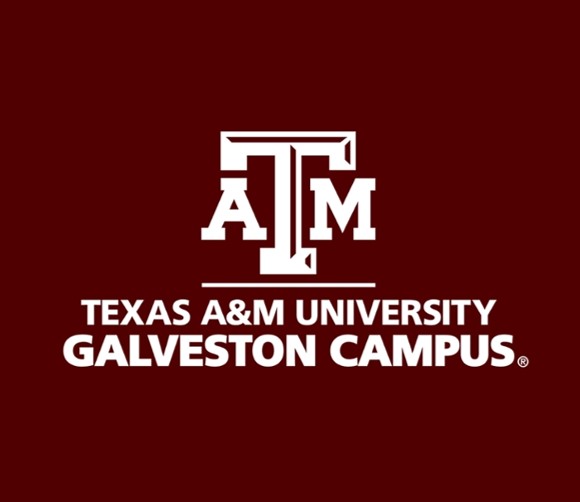
CCMP Actions Implemented: SC-2, RES-5
Grantee/Contractor: Texas A&M University at Galveston
Total Project Budget: $96,453 (Fiscal 2023 $48,226.50 Federal, $48,226.50 State)
Project Period: May 2023 – May 2025
Project Description: The Houston-Galveston region experienced a historic winter storm that resulted in an exceptional “cold-stunning” event with a widespread kill of numerous marine species. In total, approximately 13,500 sea turtles in Texas were impacted by the sudden and extended drop in air and water temperatures from winter storm Uri. Generally, cold events are common physical and biological stressors in the Galveston Bay Estuary System (GBES) that occur almost every year. However, these events appear to be increasing in intensity, duration, and frequency, as demonstrated in February 2021 with winter storm Uri. To further explore how sea turtles respond to these annual stressors, TAMUG will deploy satellite tags that collect geolocation, and temperature and they will also deploy depth sensors onto sea turtles of varying life history stages in GBES. The goal is to characterize the physical and biological stressors related to cold-stun events that drive sea turtle movement.
Sylvan Rodriguez Habitat Restoration Project Phase III

CCMP Actions Implemented: HC-2, HC-3, SC-1, SC-2
Grantee/Contractor: City of Houston Parks and Recreation Department
Total Project Budget: $105,300 (Fiscal 2022 $37,650 Federal, $37,650 State; Fiscal 2024 $15,000 Federal, $15,000 State)
Project Period: September 2021 – May 2025
Project Description: HPARD is currently working on a multi-phased project that will result in 72 acres of coastal prairie and riparian habitat. This phase (phase III) of the project will complete the restoration of the final 19 acres of prairie. Invasive tree species will be removed, leaving a mulch layer that will improve soil quality and provide the basis for a new prairie habitat. The site will be seeded with native prairie plant species and will be planted with grasses and forbs. HPARD will host two community planting events to educate the community on the importance of prairie habitat and promote stewardship and appreciation of nature parks in local communities.
Monitoring and Research (M&R)
Monitoring to Assess Long-term Restoration Success in Galveston Bay Wetlands

CCMP Actions Implemented: RES-7, RES-8, ACS-2
Grantee/Contractor: Texas A&M University at Galveston (TAMUG)
Subwatersheds: West Bay, South Bay
Total Project Budget: $151,161 (Fiscal 2025: $51,954 Federal, $51,954 State; Fiscal 2026 $23,626.50 Federal, $23,626.50 State)
Project Period: September 2024 – February 2027
Project Description: As wetland restoration becomes an increasingly important part of effective and forward-looking coastal management strategies, it is vital that the best available science is used to boost near-term and long-term restoration success. Restoration projects vary widely in terms of size, soil configuration (e.g., mounds vs. continuous fill), and the inclusion of ECS such as sills or geotubes. These designs often boost emergent plant cover over near-term (5-year) scales, but links to improved ecosystem service provision over a longer time-period are largely unquantified. Furthermore, some ECS in Galveston Bay have subsided over time, thus exposing restored areas to more fetch and wave action, potentially leading to degradation of restored sites. As wetland restoration becomes an increasingly important part of effective and forward-looking coastal management strategies, it is vital that the best available science is used to boost near-term and long-term restoration success.
One of the key outcomes of this project is a robust assessment of site design features that yield successful restoration of key ecosystem services, including carbon sequestration and food web support. This outcome will generate rigorous scientific support for the design of future restoration projects and will ensure appropriate and efficient use of regional resources in ecosystem management.
Establishment of an Oyster Sentinel Program for Tracking Perkinsus Marinus (Dermo) in Oysters of Galveston Bay

CCMP Actions Implemented: RES-1, ACS-1, ACS-2
Grantee/Contractor: UHCL
Subwatersheds: All
Total Project Budget: $297,404.33 (Fiscal 2025 $148,702.16 Federal, $148,702.17 State)
Project Period: September 2024 – December 2026
Project Description: The Eastern Oyster, Crassostrea virginica is considered to be an ecosystem engineer and keystone species providing limited hard-bottom habitat and numerous ecosystem services (e.g. wave protection, water filtration, fisheries, complex habitat, and hard bottom substrate). They are also considered a reliable bioindicator of estuarine ecosystem health which integrates the effects of freshwater inflow, pollutants, climate variability, and habitat destruction (e.g. dredging, overharvest, and shell mining) and extreme weather (e.g. droughts, floods, and storms) impacts. Oysters suffer from numerous biological and anthropogenic sources of stress and mortality. In the Gulf, the pathogenic protozoan, dermo is widely distributed throughout the oyster-producing waters of the Gulf, and the prevalence of the parasite is high among oyster populations. Consequently, it is important to understand the influence of various stressors on this critical resource.
Tracking Perkinsus Marinus (Dermo) Infection in Sun-Cured Oysters: Informing Oyster Shell Recycling Programs in Galveston Bay

CCMP Actions Implemented: RES-1, RES-6, ACS-2
Grantee/Contractor: UHCL
Subwatersheds: All
Fiscal 2025 Budget: $166,898.11 (Fiscal 2025 $83,449.06 Federal, $83,449.05 State)
Project Period: September 2024 – August 2026
Project Description: This project will research the prevalence of Dermo in commercial and retail oysters as well as evaluate a local oyster shell recycling program to determine the best method for curing shell before deploying back into Galveston Bay.
The performing party will contact organizations throughout the region to determine the current methods used to recycle and cure oyster shells currently implemented. Oyster handling processes will also be evaluated and oysters that would typically be placed back into the bay through recycling will be tested for Dermo prevalence and severity. Additionally, the performing party will work with GBF, who has conducted oyster shell recycling in the region for over 10 years, to test common curing times and methods to determine what method works best to minimize Dermo and if methods should be varied depending on the time of the year.
The Distribution and Fate of Highly Toxic Tire Rubber-Derived Chemicals in Galveston Bay

CCMP Actions Implemented: ACS-2, RES-2
Grantee/Contractor: Texas A&M University
Total Project Budget: $98,312 (Fiscal 2024 $49,156 Federal, $49,156 State)
Project Period: September 2023-December 2025
Project Description: This project aims to: (1) determine the distributions of 6PPD and 6PPD-Q in Galveston Bay over two years in relation to changes in hydrographic conditions with variable stormwater inflows; (2) determine what possible transformation products are formed from photochemical reactions; and (3) determine how 6PPD and 6PPD-Q partition between water and sediments in Galveston Bay.
Monitoring Ecosystem Indicators for Science-Based Restoration and Enhancement

CCMP Actions Implemented: RES-3, ACS-1
Grantee/Contractor: Texas A&M University of Galveston
Total Project Budget: $130,663 (Fiscal 2023 $44,298.06 Federal, $44,298.06 State; Fiscal 2024 $21,033.44 Federal, $21,033.44 State)
Project Period: May 2023 – March 2025
Project Description: Zooplankton are ecosystem health indicators of water quality and provide the principal conduits for energy transfer from phytoplankton to higher trophic levels. To date, only a few studies to examine the interactions between zooplankton and environmental factors and fisheries have been conducted. This project will conduct monthly sampling of zooplankton in Galveston Bay over two years to determine spatial and temporal variations in the abundance and distribution of eastern oyster larvae. The data generated will be used to estimate larval dispersal and recruitment success and will be used to validate a population model for Galveston Bay. The project data will fill an information gap needed for science-based ecosystem assessments of Galveston Bay.
Long-term Monitoring of Living Shorelines
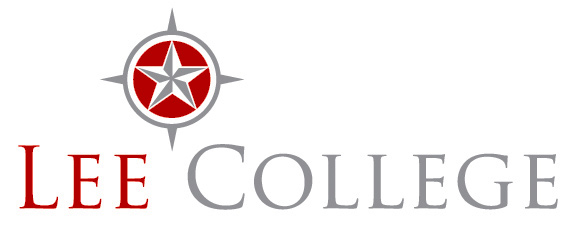
CCMP Actions Implemented: PEA-2, RES-2, RES-3, RES-6
Grantee/Contractor: Lee College
Total Project Budget: $127,191 (Fiscal 2023 $63,895.50 Federal, $63,895.50 State)
Project Period: September 2022 – August 2025
Project Description: This project will collect comprehensive data at Living Shorelines sites throughout the Galveston Bay system to assess the resiliency and functional aspects of small-scale restoration projects over time. Data will include biological community (e.g., plants, fish, benthic macroinvertebrates, sediment microorganisms), contaminants in sediment (e.g., heavy metals, organic pesticides, microplastics), and low altitude aerial imagery (to determine trends in shoreline erosion and elevation). Data will be compared to unrestored natural marsh reference sites and traditionally armored sites.
Water and Sediment Quality (WSQ)
Enhancing Clear Creek Watershed Protection and Galveston Bay Plan through Community Engagement and Monitoring

CCMP Actions Implemented: NPS-1, NPS-2, NPS-4, PHA-3, SPO-2, SPO-3
Grantee/Contractor: BPA
Subwatersheds: Clear Creek
Total Project Budget: $30,000 (Fiscal 2025 $15,000 Federal, $15,000 State)
Project Period: September 2024 – August 2026
Project Description: By focusing on pet waste education and TST monitoring, this project seeks to improve water quality, reduce pollution, and enhance the ecological health of the Clear Creek watershed and Galveston Bay. Key activities include distributing educational materials, installing pet waste stations, and training volunteers for water quality monitoring and riparian evaluation. Through these efforts, the project will foster environmental stewardship and strengthen collaborations among stakeholders to better protect the Clear Creek watershed.
Supporting Permeable Alternatives to Conventional Pavement in the Lower Galveston Bay Watershed
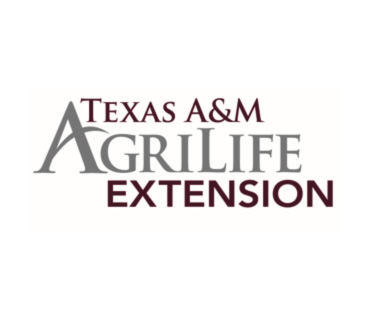
CCMP Actions Implemented: NPS-1, NPS-4
Grantee/Contractor: Texas A&M AgriLife
Subwatersheds: Jarbo Bayou, Bastrop Bayou, Highland Bayou, Dickinson Bayou
Total Project Budget: $63,847 (Fiscal 2025 $63,847 State)
Project Period: September 2024 – August 2026
Project Description: The project will deliver resources to local government leaders on permeable alternatives to conventional pavement to support wider implementation of permeable materials in infrastructure projects. A white paper will be developed following engagement with local decision makers and practitioners, providing a financial comparison of permeable and conventional options to arm local governments in furthering permeable pavement adoption in the Lower Galveston Bay watershed.
Application of Rapid Methods of Microbial Source Tracking to Assess the Source of Fecal Contamination to Western Galveston Bay

CCMP Actions Implemented: NPS-1, NPS-2, NPS-4, PS-1, PS-2, PS-3, PHA-3
Grantee/Contractor: UHCL
Subwatersheds: Mustang Bayou, Persimmon Bayou, New Bayou
Total Project Budget: $104,859 (Fiscal 2025 $104,859 State)
Project Period: September 2024 – August 2026
Project Description: The objective of this project is to make the application of rapid molecular methods used to detect the contamination of waterways with human waste a more routine methodology used by water quality professionals in the Galveston Bay watershed. To achieve this, the Performing Party will evaluate a rapid method of concentrating bacteriophages from water samples. In parallel, undergraduate students at the University of Houston Clear Lake will apply proteomic and genomic methods to identify the source of Enterococci species isolated from water samples. These complementary approaches to microbial source tracking will be validated by targeted sampling of a system, Mustang Bayou (Fort Bend and Brazoria counties), which is chronically contaminated with Fecal Indicator Bacteria (FIB). Methods and results will be shared in a workshop and other outreach activities to support implementation of Microbial Source Tracking (MST) protocols by local and regional stakeholders and water quality managers.
Watershed Protection Plan Development for Greens Bayou

CCMP Actions Implemented: NPS-1, NPS-2, NPS-4
Grantee/Contractor: H-GAC
Subwatersheds: Greens Bayou
Total Project Budget: $30,000 (Fiscal 2025 $30,000 State)
Project Period: September 2024 – August 2026
Project Description: The Houston-Galveston Area Council (Performing Party) is currently working with the Texas Commission on Environmental Quality (TCEQ) on a Clean Water Act Section 319 watershed protection plan (WPP) development project for Greens Bayou, which was initiated in December 2023 and continues through August 2027. The effort will produce an Environmental Protection Agency 9-Element watershed-based plan and conduct nonpoint source pollution education and outreach elements during the course of the project.
Funding under this project will be used to support the existing federal funding and local match for the project, as supplemental local match. The intended use of the funds will be to cover staff time and related allocation expenses (fringe, indirect, and other) for stakeholder coordination, outreach and education, and support of Galveston Bay Estuary Program programming and messaging.
Digging Deeper: Addressing Soil Health to Improve Water Quality

CCMP Actions Implemented: NPS-1, NPS-4, PHA-3, HC-3, FWI-3, SPO-2
Grantee/Contractor: Texas AgriLife
Total Project Budget: $57,894 (Fiscal 2024 $28,947 Federal, $28,947 State)
Project Period: September 2023 – August 2025
Project Description: The lower Galveston Bay watershed has a multitude of urban and suburban communities and numerous impaired waterbodies, most of which have a WBP and groups actively working to improve water quality. These factors make it an excellent location to pilot a new type of soil health workshop. Workshops will encourage a vision of lawns, landscaped areas, and tracts of undeveloped land as productive ecosystems. This project is a first step in bringing soil back into the conversation for urban and suburban landowners. Implementation of these practices would have a profound impact on local water quality by reducing both stormwater runoff and NPS pollution.
Targeted Microplastics Monitoring in the Waters of Galveston Bay and its Tributaries
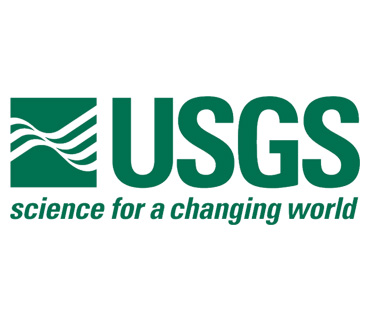
CCMP Actions Implemented: NPS-1, PHA-4, PHA-5, RES-1, RES-2, RES-3
Grantee/Contractor: United States Geological Survey
Total Project Budget: $86,000 (Fiscal 2024 $43,000 Federal, $43,000 State)
Project Period: September 2023 – May 2026
Project Description: The purpose of this project is to expand upon these studies and fill the gaps in our understanding of the spatial and temporal distribution of microplastics in Galveston Bay and its tributaries by:
- targeting tributaries and locations in the bay that could not be included in the previous two studies;
- potentially revisiting sites of interest based on analytical results and/or identified patterns in the previous two studies; and
- targeting new locations based on findings of other GBEP funded projects.
Green Stormwater Infrastructure (GSI) Demonstration Site Development for Greenspace Education in the Galveston Bay Watershed
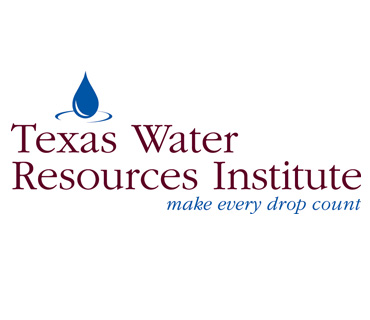
CCMP Actions Implemented: NPS-2, NPS-3, PEA-2
Grantee/Contractor: Texas Water Resources Institute (TWRI)
Total Project Budget: $82,661 (Fiscal 2024 $41,330.50 Federal, $41,330.50 State)
Project Period: September 2023 – May 2026
Project Description: Soil Crop Sciences (SCSC), TWRI, and Biological and Agricultural Engineering (BAEN) at Texas AgriLife plan to coordinate with HCC to develop a minimum of two different types of GSI demonstration sites for greenspaces at the HCC Katy Campus. Interactive signage will also be developed for each demonstration to promote informal learning around the design and function of GSI elements. BAEN, SCSC, and TWRI will also work closely with the Harris County horticulture agents and the Texas Community Watershed Partners to consult on the demonstration sites’ design and procuring supplies and plants for development. The students in the landscape design program at HCC will spearhead upkeep and maintenance of the project area after the project period.
Strategic Implementation of Green Infrastructure Best Management Practices in the Double Bayou Watershed

CCMP Actions Implemented: NPS-1, NPS-3
Grantee/Contractor: Houston Advanced Research Center
Total Project Budget: $81,703 (Fiscal 2024 $81,703 State)
Project Period: September 2023 – August 2025
Project Description: The objective of this project is to develop strategic Green Infrastructure (GI) Best Management Practice (BMP) recommendations in support of the Double Bayou Watershed Protection Plan by integrating bacteria source tracking (BST), watershed-based modeling, and stakeholder outreach. This project will undertake the following tasks: 1) a BST assessment, 2) Soil and Water Assessment Tool (SWAT+) modeling, 3) GI BMP implementation strategy development, and 4) stakeholder outreach. This project leverages two additional funded projects, 1) Implementation of the Double Bayou Watershed Protection Plan: Monitoring, Coordination, and Stakeholder Outreach (Double Bayou Implementation 11/01/22-08/31/25) and 2) the Texas Bacterial Source Tracking Program (Bacteria Source Tracking 8/01/22-04/30/24).
Houston Parks and Recreation Department Water Management Plan

CCMP Actions Implemented: NPS-1, NPS-3
Grantee/Contractor: Houston Parks and Recreation Department
Total Project Budget: $50,000 (Fiscal 2023 $25,000 Federal, $25,000 State)
Project Period: December 2022 – May 2025
Project Description: HPARD owns and/or manages 380 parks throughout Houston with a footprint of over 25,000 acres. The parks fall within numerous watersheds and over 70 are immediately adjacent to a major bayou or tributary that flows into Galveston Bay. HPARD’s Natural Resources Management Program is tasked with delivering solutions to water quality and quantity problems for the department in the form of nature- based and GI projects. To support increasing numbers of green stormwater infrastructure features throughout Houston’s park system, HPARD has identified the need for a Water Management Plan that will provide guidance and establish strategies for addressing impacts to water quality and quantity throughout the park system and rights-of-way in Houston.
Watershed Protection Plan Development for Clear Creek

CCMP Actions Implemented: NPS-1, NPS-2, NPS-4
Grantee/Contractor: Houston-Galveston Area Council
Total Project Budget: $30,000 (Fiscal 2023 $30,000 State)
Project Period: September 2022 – May 2025
Project Description: H-GAC is currently working with TCEQ on a Clean Water Act Section 319 watershed protection plan (WPP) development project for Clear Creek, initiated in 2021 and continuing through FY 2024. The effort will produce an EPA 9-Element watershed-based plan and conduct NPS education and outreach elements during the project. Preliminary work was completed as part of a TMDL project, during which strong local support for full development specific to this watershed was expressed. Water quality issues impacting recreation, local economies, public health, and the environment persist in this subsidiary watershed of the greater Galveston Bay Watershed.
Federal Bipartisan Infrastructure Law (BIL) Funded Projects
Federal Fiscal 2024 Projects
Evaluating Galveston Bay’s Resilience to Ocean and Coastal Acidification

CCMP Actions Implemented: SC-1, SPO-2, SPO-3, RES-2, RES-3, RES-8, ACS-1, ACS-2
EPA Areas of Special Interest Implemented: Water Reuse and Conservation
Executive Order 14008 Parameters Implemented: N/A
EJ Screen Parameters Implemented: >80% Low income, >80% Linguistically isolated, >80% Less than high school education, >80% Unemployed, >80% Low life expectancy
BIL Priorities Implemented: Support of commercial and recreational finfish and shellfish monitoring for public health risks and/or sustainability; habitat protection and enhancement; collaborating with underrepresented and/or under-resourced communities via having physical presence or connection to the targeted communities; monitoring and research that:
- captures a meaningful, quantifiable measure of a response action taken;
- produces data applicable and transferable to multiple programs; or
- produce meaningful data that can be used for future implementation and management decisions.
Grantee/Contractor: Houston Advanced Research Center (HARC)
Total Project Budget: $278,800 (Federal Fiscal 2024 $278,800)
Project Period: September 2024 – May 2027
Project Description: This project will provide baseline assessments of OCA in Galveston Bay that will allow for comparisons of carbonate system variability and effects on shellfish communities in Galveston Bay estuaries. Ocean acidification is driven by elevated atmospheric cardon dioxide. OCA is primarily driven by regional factors such as inflows (high carbon dioxide, low pH water) and eutrophication and is exacerbated by ocean acidification. OCA is a threat to our oceans and estuaries and to life forms that rely on carbonate-based shells and skeletons, such as oysters, shrimp, and crab. Although there is continuous monitoring of some variables that may influence shellfish health in Galveston Bay such as water temperature, salinity, freshwater inflows, and water levels, there is no continuous monitoring of carbonate system parameters such as pH, dissolved oxygen, or the partial pressure of carbon dioxide.
Herman Brown Park Riparian Restoration and Community Engagement Project- Phase I

CCMP Actions Implemented: HC-3, SC-1, SC-2, SPO-1, PEA-3
EPA Areas of Special Interest Implemented: Reduce Nutrient Pollution, Marine Litter Reduction
Executive Order 14008 Parameters Implemented: (Census tracts: 48201232600, 48201232701) Climate Variability Factors (expected building loss rate, projected flood risk, low income), Energy, Legacy Pollution, Workforce Development
EJ Screen Parameters Implemented: >80% Less Than High School Education, >90% Limited English Speaking
BIL Priorities Implemented: Habitat protection and enhancement; collaborating with underrepresented and/or under-resourced communities via having physical presence or connection to the targeted communities; engaging K-12 students and/or adults in hands-on, place-based environmental education; and expanding strategic partners with environmental and non-environmental community organizations.
Grantee/Contractor: City of Houston Parks and Recreation Department (HPARD)
Total Project Budget: $295,000 (Federal Fiscal 2024 $295,000)
Project Period: September 2024 – May 2027
Project Description: Herman Brown Park contains 670 acres of riparian forest habitat along Hunting Bayou and is a nature preserve protected from development by city ordinance. Phase 1 of this project will enhance 230 acres of forested habitat located on the southern side of the park.
The habitat enhancement will include identifying and removing invasive species and planting native species throughout the management area. The restoration efforts will support the local ecosystem by restoring historical plant communities throughout the site and along Hunting Bayou. These riparian forests help to improve water quality by reducing NPS pollution, decrease erosion, and help to mitigate flooding.
Additionally, HPARD will work with a subcontractor to create a Habitat Management Plan to guide HPARD in future maintenance of the park.
Resiliency Education and Infrastructure

CCMP Actions Implemented: NPS-2, PHA-2, RES-2, HC-2, HC-3, FWI-3, SPO-1, SPO-3, SPO-4, PEA-2, PEA-3
EPA Areas of Special Interest Implemented: Reduction in Nutrient Pollution, Water Reuse and Conservation, Marine Litter Reduction, Green Infrastructure and Resiliency
Executive Order 14008 Parameters Implemented: (Census Tracts 48201252400, 48201252600, 48201252500, 48201252301) Climate Variability Factors (expected building loss rate, projected flood risk, low income), Energy, Legacy Pollution, Clean Water
EPA’s Environmental Justice Screening and Mapping Tool (EJ Screen) Parameters Implemented: >80% Low income, >80% Linguistically isolated, >80% Less than high school education, >80% Unemployed, >80% Low life expectancy
BIL Priorities Implemented: Support of management measures and watershed-based plans; habitat protection and enhancement; support for existing projects; collaborating with underrepresented and/or under-resourced communities via having physical presence or connection to the targeted communities; engaging K-12 students and/or adults in hands-on, place-based environmental education; and expanding strategic partners with environmental and non-environmental community organizations.
Grantee/Contractor: GBF
Total Project Budget: $336,000.00 (Federal Fiscal 2024 $336,000)
Project Period: September 2024 – August 2026
Project Description: This project will create a showcase for green infrastructure and coastal resiliency by providing functional and applicable examples of water conservation and reuse, and habitat protection and enhancements. The TBDC demonstration site will host a series of environmental education events for the Channelview community through K-12 programing, teacher development workshops, science nights, and other community events.
Federal Fiscal 2022 - 2023 Projects
Coastal Savannah and Riparian Habitat Restoration Project

CCMP Actions Implemented: NPS-3, HC-3, SC-1, SC-2, SPO-1
Justice 40 Parameters Implemented: (Census tracts: 48201334100-48201334100-48201330800-48201330900) Climate Change, Legacy Pollution
EJ Screen Parameters Implemented: >80% Unemployed, >80% Low Life Expectancy
EPA Areas of Special Interest Implemented: Reduction in Nutrient Pollution, Green Infrastructure and Resiliency
BIL Priorities Implemented: Accelerate and more extensively implement CCMPs; ensure that benefits reach disadvantaged communities; build the adaptive capacity of ecosystems and communities; and leverage additional resources.
Grantee/Contractor: Houston Parks and Recreation Department (HPARD)
Total Project Budget: $140,000.00 (Federal Fiscal 2022-2023 $390,000)
Project Period: March 2024 – May 2026
Project Description: The Coastal Savannah and Riparian Habitat Restoration Project will restore 24.5 acres of coastal prairie, wetland, and savannah habitat in E.R. and Ann Taylor Park and 21 acres of riparian forest in Furman Greenspace in Harris County, Texas. Houston Parks and Recreation Department’s Natural Resources Management Program will restore four kinds of key habitats that have been lost throughout the Houston Region: riparian forest, savannah, prairie, and wetland ecosystems. The restoration projects will provide ecosystem and community resilience by restoring and enhancing vital ecosystems, increasing rainwater capture through infiltration, and trapping and filtering nonpoint source pollutants as runoff from adjacent urban development. Community and volunteer planting projects will allow citizens to be involved in the creation of these critically endangered ecosystems.
UHCL Community Outreach

CCMP Actions Implemented: SPO-1, SPO-2, SPO-3, SPO-4
EPA Areas of Special Interest Implemented: N/A
Justice 40 Parameters Implemented: Discrete targets not yet established so CJEST currently not applicable
EJ Screen Parameters Implemented: Discrete targets not yet established/formally secured so EJ screen currently not applicable
BIL Priorities Implemented: Accelerate and more extensively implement CCMPs; ensure that benefits reach disadvantaged communities; and build the adaptive capacity of ecosystems and communities.
Grantee/Contractor: UHCL
Total Project Budget: $146,800 (Federal Fiscal 2022-2023 $125,000; State Fiscal 2025 $21,800 State)
Project Period: September 2023 – May 2026
Project Description: In conjunction with GBEP, UHCL, and partners, KPRC-TV, will use the reach of their broadcast signal to communicate Back the Bay and other project messaging on a grand scale to the Houston Designated Market Area (DMA) and simultaneously communicate targeted messaging on behalf of stakeholders within underserved/underrepresented communities. As an environmental marketing partner, KPRC-TV will be able to provide extensive reach for messaging that benefits the entire DMA, while strategically building customized plans for the stakeholders. The created, customized media, utilizing TV as well as targeted digital assets, will educate and engage Houston and surrounding areas on the importance of protecting and sustaining living resources. Products will include:
- Houston Life segments (TV Campaign with 30 x 30 second commercials)
- Production of 30 second commercials used for TV and digital
- Banner ads and streaming commercials on Click2Houston.com
The seven key initiatives are as follows:
- The 9th Addition to Coastal Heritage Preserve,
- Drought and Water Conservation Outreach Campaign,
- White Oak Bayou Riparian Restoration Project,
- Stopping Plastics and Litter Along Shorelines (SPLASh) in Houston’s Bayous and Beyond,
- Targeted Microplastics Monitoring in The Waters of Galveston Bay and Its Tributaries,
- River, Lakes, Bays N’ Bayous Trash Bash® (Trash Bash®),and
- Tracking Perkinsus Marinus (Dermo) Infection in Sun-Cured Oysters: Informing Oyster Shell Recycling Programs in Galveston Bay.
Middle Armand Bayou Protection Project

CCMP Actions Implemented: HC-1, SC-1
EPA Areas of Special Interest Implemented: Green Infrastructure and Resiliency
Justice 40 Parameters Implemented: (Census tracts: 48201340203-48201341400) None
EJ Screen Parameters Implemented: >80% Unemployed
BIL Priorities Implemented: Accelerate and more extensively implement CCMPs; ensure that benefits reach disadvantaged communities; build the adaptive capacity of ecosystems and communities; and leverage additional resources.
Grantee/Contractor: Armand Bayou Nature Center (ABNC)
Total Project Budget: $390,000.00 (Federal Fiscal 2022-2023 $390,000)
Project Period: March 2024 – May 2026
Project Description: The Middle Armand Bayou Protection Project is focused on preserving 1,065 acres of coastal habitat through fee-simple acquisition in Harris County, Texas. The targeted tract contains habitats that are representative of the Texas Gulf Coast: wetland forest, coastal tall grass prairie, and the non-channelized estuarine Armand Bayou and its surrounding wetlands. The survival of these vulnerable ecosystems is vital for the 370 species of wildlife that depend upon them, for people seeking the wonder and comforts of nature, and for the range of ecosystem services they provide, including storm water retention, flood abatement and water quality improvement.
Repair and Replacement of Failing On-Site Sewage Facilities (OSSFs) for Homeowners in Disadvantaged Communities with Vulnerable Populations

CCMP Actions Implemented: NPS-1, NPS-2, NPS-3, NPS-4, PS-2, PHA-3, SPO-2, SPO-4, PEA-1, PEA-2, PEA-3
EPA Areas of Special Interest Implemented: Reduction in Nutrient Pollution, Water Reuse and Conservation
Justice 40 Parameters Implemented: Discrete targets not yet established so Climate and Economic Justice Screening Tool (CJEST) currently not applicable
EJ Screen Parameters Implemented: Discrete targets not yet established/formally secured so EJ Screen currently not applicable
BIL Priorities Implemented: Accelerate and more extensively implement CCMPs; ensure that benefits reach disadvantaged communities; and build the adaptive capacity of ecosystems and communities.
Grantee/Contractor: H-GAC
Total Project Budget: $365,000 (Federal Fiscal 2022-2023 $365,000)
Project Period: March 2024 – August 2026
Project Description: Through this project, H-GAC will:
- Identify target communities and qualifying recipients for OSSF repair or replacement
- Coordinate with authorized agents and local officials
- Coordinate with and implementation of watershed-based plans
- Repair or replace failing OSSFs
- Conduct homeowner education and outreach on the operation and maintenance of OSSFs
As part of the “Water Quality Outreach Implementation for Vulnerable Rural Populations” project, H-GAC will use interactive tools and regional water quality data to identify and generate a list of vulnerable populations. A stakeholder group will then review and provide input on final vulnerable populations identified. GBEP will work with H-GAC to try and select communities above the 80th percentile of demographics identified in the EJ Screen tool. Communities for this project will be selected from the previously developed list.
Failing OSSFs can allow inadequately treated wastewater to enter surface groundwater resulting in numerous water quality and human health concerns. The repair or replacement of failing OSSFs results in an improved effluent quality and a reduction in the amount of nutrients entering the environment.
Salt Bayou Acquisition and Restoration Project

CCMP Actions Implemented: HC-1, HC-2, HC-3, SC-1, SC-2
Justice 40 Parameters Implemented: (Census tract: 48167721800) Climate Change, Health Burdens, Workforce Development
EJ Screen Parameters Implemented: >80% Linguistically Isolated, >80% Low Life Expectancy
EPA Areas of Special Interest Implemented: Reduction in Nutrient Pollution, Green Infrastructure and Resiliency
BIL Priorities Implemented: Accelerate and more extensively implement CCMPs; ensure that benefits reach disadvantaged communities; and build the adaptive capacity of ecosystems and communities.
Grantee/Contractor: GBF
Total Project Budget: $390,000 (Federal Fiscal 2022-2023 $390,000)
Project Period: March 2024 – May 2026
Project Description: The Salt Bayou Acquisition and Restoration Project is focused on preserving approximately 25 acres of coastal habitat through fee-simple acquisition in Galveston County, Texas. GBF will coordinate with local partners to acquire, restore, and enhance approximately 25 acres of coastal prairie in the underserved community of San Leon, Texas. The goals of this proposal are 1) acquire 25 acres of coastal prairie; 2) conduct treatment of invasive plant species; and 3) create public access opportunities which may include a natural-surface walking path and/or interpretive signage. The acquisition will kickstart the project, which is a multi-faceted initiative utilizing land conservation, public access, and green infrastructure to create a natural preserve to provide wildlife habitat and recreational opportunities.
Stopping Plastic and Litter Along Shorelines (SPLASh) in Houston's Bayous and Beyond
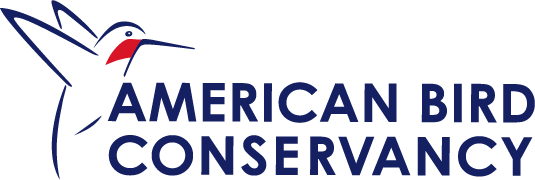
CMP Actions Implemented: NPS-2, HC-2, SPO-1, SPO-2, SPO-3, PEA-1, PEA-2, PEA-3, RES-3, ACS-2
Justice 40 Parameters Implemented: (Census Tracts: multiple) Climate Change, Workforce Development, Health Burdens, Sustainable Housing
EJ Screen Parameters Implemented: >80% Linguistically Isolated, >80% Less than High School Education, >80% Low Life Expectancy
EPA Areas of Special Interest Implemented: Marine Litter Reduction
BIL Priorities Implemented: Accelerate and more extensively implement CCMPs; ensure that benefits reach disadvantaged communities; build the adaptive capacity of ecosystems and communities; and leverage additional resources.
Grantee/Contractor: American Bird Conservancy (ABC)
Total Project Budget: $353,600 (Federal Fiscal 2022-2023 $353,600)
Project Period: February 2024 – August 2026
Project Description: In conjunction with GBEP and partners ABC’s Stopping Plastics and Litter Along Shorelines (SPLASh) program will target Texas Education Agency (TEA) Region 4 students, City of Houston communities, and the greater Houston-Galveston region in order to mitigate the trash and plastic pollution problems that threaten the health of humans and wildlife in the greater Galveston Bay Watershed. Through community outreach, educational programming, and trash clean-up events focused in the City of Houston with an emphasis on the areas surrounding Sims and Brays Bayous, the project’s goal is to foster a sense of stewardship and community pride in City of Houston residents and decrease the amount of trash and plastic pollution in Houston waterways which in turn will decrease the amount of pollution in the Greater Galveston Bay watershed.
Pictures without a credit are either taken by Estuary Program staff or are free-use images from Wikipedia commons.
Shorthand Summary of the Action Items of The Galveston Bay Plan, 2nd Edition (2018)
ENSURE SAFE HUMAN AND AQUATIC LIFE USE
Improve Water Quality Through Nonpoint Source Pollution (NPS)
NPS-1 Support Watershed-Based Plan Development and Implementation
NPS-2 Support Nonpoint Source Education and Outreach Campaigns
NPS-3 Implement NPS Best Management Practices
NPS-4 Host Nonpoint Source Workshops
Improve Water Quality Through Point Source Pollution Abatement (PS)
PS-1 Support Stormwater Education Programs
PS-2 Achieve Sanitary Sewer System Capacity and Integrity
PS-3 Increase Wastewater Treatment Facility Compliance
Promote Public Health and Awareness (PHA)
PHA-1 Improve Seafood Advisory Awareness
PHA-2 Improve Regional Contact Recreation Risk Awareness
PHA-3 Improve Contact Recreation Safety Through Watershed-Based Plans (WBPs)
PHA-4 Improve Shellfish Consumption Safety Through WBPs
PHA-5 Improve Finfish Consumption Safety Through WBPs
PROTECT AND SUSTAIN LIVING RESOURCES
Support Habitat Conservation (HC)
HC-1 Land Acquisition
HC-2 Habitat Restoration
HC-3 Habitat Enhancement
Support Species Conservation (SC)
SC-1 Native Species Management
SC-2 Invasive Species Control
Sustain Freshwater Inflows (FWI)
FWI-1 Regional Planning for Freshwater Inflows
FWI-2 Freshwater Inflows Research and Management
FWI-3 Water Conservation and Education
ENGAGE COMMUNITIES
Preserve Galveston Bay Through Stakeholder and Partner Outreach (SPO)
SPO-1 Stewardship Programs and Volunteer Opportunities
SPO-2 Workshops and Events
SPO-3 Support Regional Initiatives
SPO-4 Local Government Outreach
Support Public Education and Awareness Initiatives (PEA)
PEA-1 Key Issue Engagement
PEA-2 Adult Education
PEA-3 Kindergarten to 12thGrade (K-12) Education Efforts
INFORM SCIENCE-BASED DECISION MAKING
Collaborate with Research Institutions to Support Focus Area Applied Research and Monitoring (RES)
RES-1 Conduct Biological Stressor Monitoring and Research
RES-2 Conduct Geochemical Stressor Monitoring and Research
RES-3 Conduct Physical Stressor Monitoring and Research
RES-4 Conduct Monitoring and Research to Address Limits to Contact Recreation
RES-5 Conduct Monitoring and Research to Address Limits to Seafood Consumption
RES-6 Evaluate Best Management Practice (BMP) Projects
RES-7 Conduct Research on Ecosystem Service and Economic Valuation of Bay Resources
RES-8 Complete Coastal Resiliency and Acclimation Studies
Increase Access to Galveston Bay Ecosystem Information (ACS)
ACS-1 Tracking Ecosystem Health Indicators
ACS-2 Access to Monitoring and Research Data
ACS-3 Track Galveston Bay Plan Implementation
